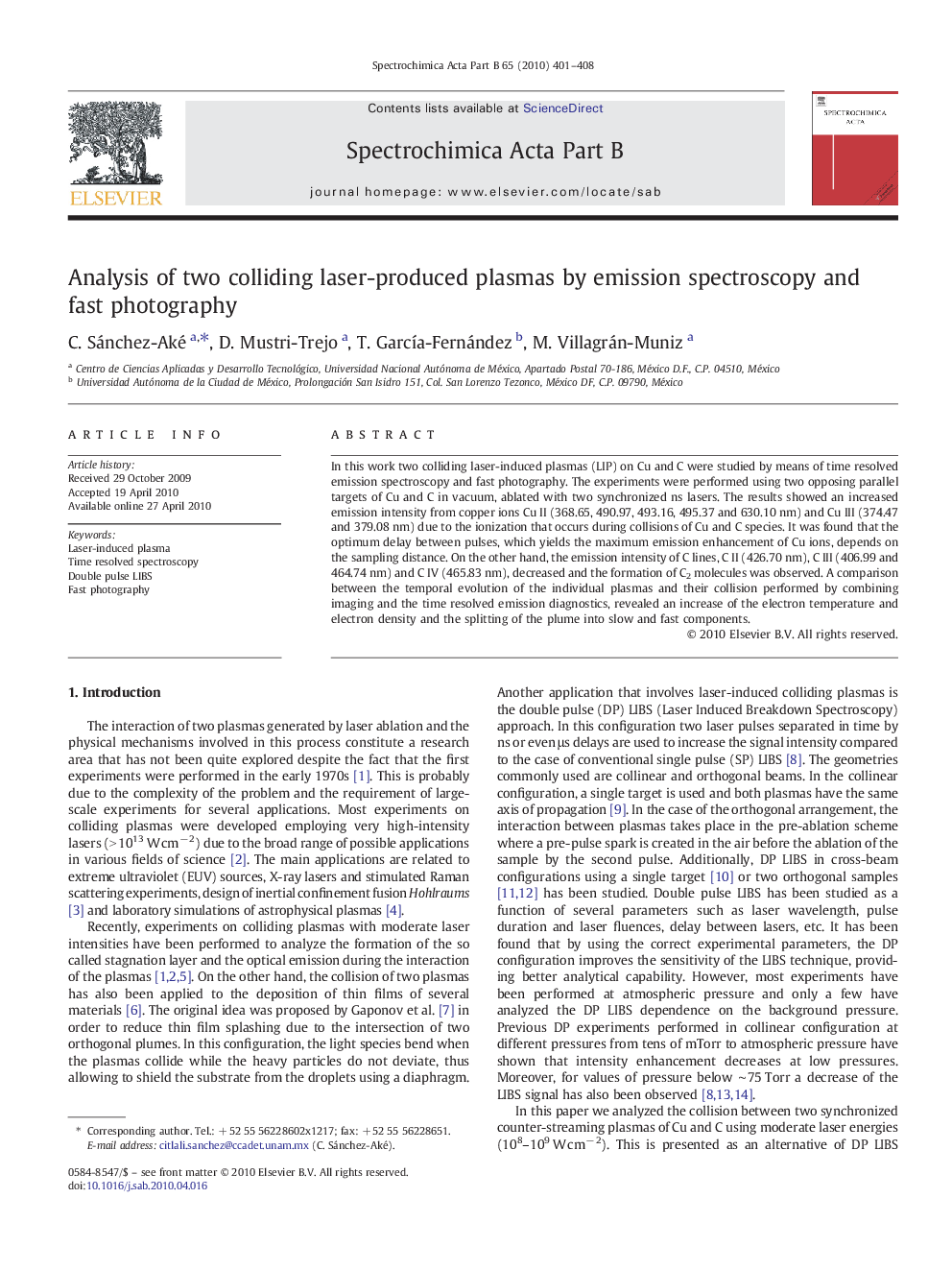| Article ID | Journal | Published Year | Pages | File Type |
|---|---|---|---|---|
| 1241055 | Spectrochimica Acta Part B: Atomic Spectroscopy | 2010 | 8 Pages |
In this work two colliding laser-induced plasmas (LIP) on Cu and C were studied by means of time resolved emission spectroscopy and fast photography. The experiments were performed using two opposing parallel targets of Cu and C in vacuum, ablated with two synchronized ns lasers. The results showed an increased emission intensity from copper ions Cu II (368.65, 490.97, 493.16, 495.37 and 630.10 nm) and Cu III (374.47 and 379.08 nm) due to the ionization that occurs during collisions of Cu and C species. It was found that the optimum delay between pulses, which yields the maximum emission enhancement of Cu ions, depends on the sampling distance. On the other hand, the emission intensity of C lines, C II (426.70 nm), C III (406.99 and 464.74 nm) and C IV (465.83 nm), decreased and the formation of C2 molecules was observed. A comparison between the temporal evolution of the individual plasmas and their collision performed by combining imaging and the time resolved emission diagnostics, revealed an increase of the electron temperature and electron density and the splitting of the plume into slow and fast components.
